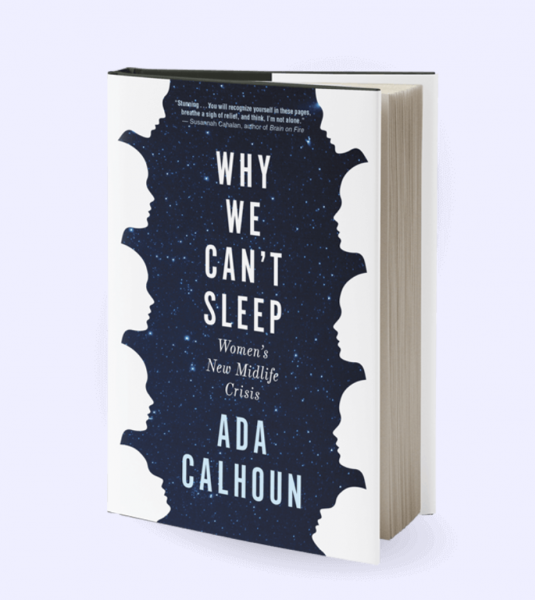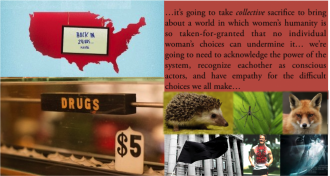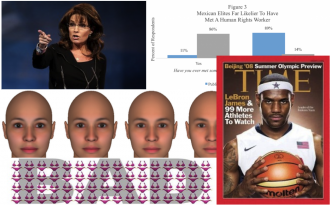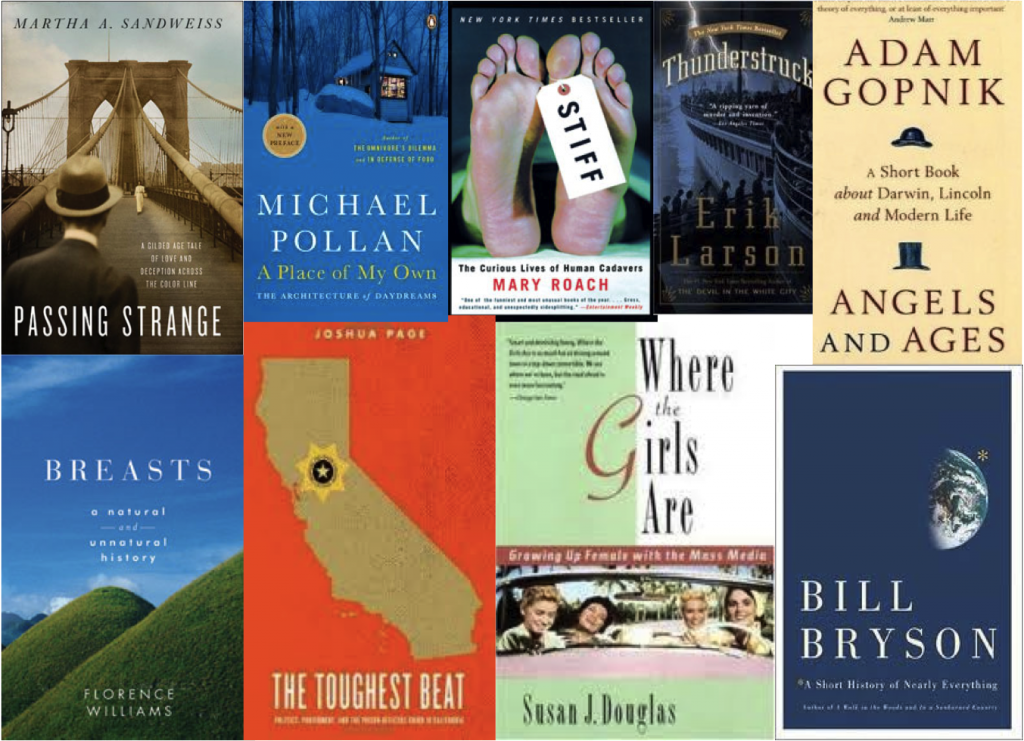What are you losing sleep over? Sociologist Syed Ali reviews a new book that engages the question for middle-aged American women.
Ada Calhoun, Why We Can’t Sleep: Women’s New Midlife Crisis, Grove Press, 2020.

Generation X women can’t sleep—a third of them get less than
seven hours a night. They sleep less than other adult age groups, and, compared
to Generation X men, they have a harder time falling asleep and staying asleep.
Why?
The answer to this question is at the core of Ada Calhoun’s brilliant new book, Why We Can’t Sleep, the story of about today’s middle-class American women and their midlife crises.
Why We Can’t Sleep: Women’s New Midlife Crisis looks specifically looking at the women of Generation X, born between 1965-1980, who are caught in between and are distinct from Boomers and Millennials. (Calhoun understands that many people, like my former Contexts Magazine co-editor Philip N. Cohen, think the idea of a generational experience is nonsense. She’s using it anyway.) These women have come of adult age as college tuition increased (so they have more debt, and more agita about debt, than their parents), wages have stagnated (daughters born in the 1980s have a 25% chance of out-earning their fathers—and no, that’s not a typo), and age of first marriage and first child have increased so these women are taking care of children and aging parents at the same time. For these women, who are the beneficiaries of the feminist struggles of the 1960s, “the belief that girls could do anything morphed into a directive that they must do everything.” To say these middle-class women of varied ethnic/racial and regional backgrounds have a lot of pressure on them is, well, an understatement.
Calhoun is one of these women. Born in 1976, she writes
that, “[s]ince turning forty a couple of years ago, I’ve been obsessed with
women my age and their—our—struggles with money, relationships, work, and existential
despair.” She started off by calling a reporter friend and asked, “Do you know
anyone having a midlife crisis I could talk to?” The friend, after thinking
about it, said, “I’m trying to think of any woman I know who’s not.”
Sleep, or the lack of it, is just the tip of the iceberg, an entry point to this book’s thoroughly sociological analysis of women’s midlife crises. Calhoun knows that what matters is Contexts (my favorite word and magazine), and indeed that is the story she is most interested in telling. “The context for Generation X women is this: we were an experiment in crafting a higher-achieving, more fulfilled, more well-rounded version of the American woman. In midlife many of us find that the experiment is largely a failure. We thought we could have both thriving careers and rich home lives and make more and achieve more than our parents, but most of us have gained little if any advantage.” The book is a deep dive into the divergence between aspirations and reality, the structural factors that keep women from having it all, and the psychological toll this takes. Individually, a woman’s midlife crisis can be seen as her issue; but we know it goes well beyond her.
What are these factors that go well beyond the individual? Again, shifts in the economy and in terms of women’s rights have led far more women to enter the workforce. On the one hand, this means economic power. On the other hand, it means economic responsibility. As the age of marriage and childbirth has gone up, they’re taking care of children at the same time as they’re often taking care of their parents and their in-laws. Even if women are childless, they’re still stressing about work and parents and partners and money and retirement and health insurance and and and. The debt levels that people of this generation face are higher than for older folk at the same age, cost of living (especially childcare and rent/mortgages) is higher and wages are stagnant in the middle so paying off debt is harder, and they save less. They get laid off. They’re forced to freelance/work part-time/be unemployed. With so much on their plates and so much financial insecurity, even for the richer among them, it’s not surprising that some of the many balls these women are juggling will fall. A response Calhoun heard from some women about careers and kids and husbands not panning out as hoped was: “What did *I* do wrong?” (Emphasis added.) They blame themselves instead of others or their structural circumstances; they swallow their despair, quietly. This is not something men do.
*********
That said, a lot has gone right for these women of a certain
age. The wage gap has shrunk some. There are more professional opportunities.
Title IX has expanded educational and sports opportunities in K-12 and higher
ed. Men do more work at home. There’s some pushback against sexism. “The
complaints of well-educated middle- and upper-middle-class women are easy to
disparage—as a temporary setback, a fixable hormonal imbalance, or
#FirstWorldProblems.”
So, there’s lots of reasons why Generation X women shouldn’t
feel bad. And here’s the central question of the book that Calhoun poses: “So
why do we?”
What to do when you’re a middle-aged woman who’s feeling bad, feeling depressed, feeling physically discombobulated, and you can’t sleep? There’s no shortage of people giving advice—doctors, other women, men (so many men), the fashion mags, the morning shows, Gwyneth Paltrow. Take anti-depressants. Supplements. Pollens and oils. CBD. Put jade eggs in your vagina. Long walks in nature, take the stairs, drink lots of water, limit caffeine and alcohol, do your planks.
And yet still they feel bad. And still they can’t sleep. But
no one hears them. Calhoun points out the stereotypical male midlife crisis
involves busting stuff up—marriages, careers, etc. But women’s are usually
quieter. Sometimes, yeah, there’s an affair, “but more often she sneaks her
suffering in around the edges of caretaking and work. From the outside, no one
may notice anything amiss.” One of the women she interviewed bought herself
that well-known marker of the male midlife crisis—a car. But not a fancy, new
sports car. She turned in her minivan for a Prius. A ten-year-old one at that.
Calhoun’s triumph is to put the personal in a sociological
perspective, in a very convincing way. You don’t have to take it from me, a
cisgender, hetero middle-aged male. My wife, Eli Pollard, who’s turning 50 this
year (note to self: start party planning now), confiscated the book from me
when I bought it two weeks ago. She devoured it and, like so many other women
have commented in public forums, said she felt like this book was written just
for her. Kristi Williams, badass sociologist and demographer (and editor of the
Journal of Marriage and Family) told me this when I asked her what she
especially liked about Calhoun’s work: “That my crippling insomnia might be
related to the intersection of age, period, and cohort rang true in a geeky
demographer kind of way.” I said, “Dude—please let me quote that!” To which she
said, “Fuck yeah! Add menopausal hormone chaos to that demographic cocktail as
well.”
And speaking of menopause, I like that Calhoun puts hormonal
changes due to perimenopause and menopause as factors in the midlife crisis and
sleep deprivation near the end of the book. She starts with the sociological,
then goes to the physiological, and shows the interplay. She put it this way in
an adapted excerpt in Time Magazine: “The unique confluence of stressors and
hormonal shifts poses a sort of chicken-or-egg problem for Gen X women: the
symptoms of hormonal fluctuation (like sleeplessness) are exacerbated by
stress, while those symptoms (like not sleeping) in turn raise stress levels.”
Her penultimate chapter is on something all too familiar—the
crippling effects of too much social media. But instead of going on about this
(something she could have easily and successfully done), she pivots to
something much more useful conceptually: the benefits of a networked life. She
gives plenty of examples from others and herself, and solid advice. “[T]he
second you start having perimenopausal symptoms: start a club. A book club
gives you a reason to read and to get together with friends. A stitch and
bitch. A going-out-dancing club. Margarita Mondays. A
try-every-pizza-place-in-town club. [SA: This only applies to New Yorkers.] A
New Midlife Crisis Initiation Club,™ perhaps!”
Her concrete advice in this chapter, and throughout the
book, really, is a welcome, sociologically informed, corrective to the multiple
streams of well-meaning though often ineffective and sometimes just bad advice
women get from doctors, the fashion mags, the morning shows, Gwyneth Paltrow.
Some things people suggest to middle-aged women who are feeling bad, feeling
depressed, feeling physically discombobulated, and can’t sleep: Take
anti-depressants. Supplements. Pollens and oils. CBD. Put jade eggs in your
vagina. (Don’t put jade eggs in your vagina.) Take long walks in nature, take
the stairs, drink lots of water, limit your caffeine and alcohol intake, do
your planks.
They do these things, and yet still they feel bad. And still
they can’t sleep. But no one hears them. Calhoun points out the stereotypical
male midlife crisis involves busting stuff up—marriages, careers, etc. But
women’s are usually quieter. Sometimes, yeah, there’s an affair, “but more
often she sneaks her suffering in around the edges of caretaking and work. From
the outside, no one may notice anything amiss.” One of the women she
interviewed bought herself that well-known marker of the male midlife crisis—a
car. But not a fancy, new sports car. She turned in her minivan for a Prius. A
ten-year-old one at that.
*********
I should have said this earlier, but I’ll say it now—I’m friends with Calhoun, so of course I’m her cheerleader. But that’s ok, because this book really is great. (There are See the dozens of positive reviews online, if you don’t believe me.. And Pollard’s and Williams’s words above.) Who should read this book? Generation X women for sure. Anyone who has a Generation X woman in their lives—partners, parents, children, friends, coworkers—needs to read this to understand their situation. You want to know why this woman can’t sleep? Calhoun has answers. You want to know how you can help? There are implicit and explicit answers. Do more for this woman. Bosses, pay her more and give her better job opportunities. Partners, do half the cooking, cleaning, and childwork. Make your their teenage kids read this and tell them to be better to their mothers! (Ok, about that last one…)
Since most of you reading this review will probably be
sociologists/related geeks, anyone who teaches courses on aging, gender,
marriage and family should assign this bookuse this. Calhoun makes the point
that research on aging still often skips middle age, and it’s typically on men.
This book fills a gaping hole, and it’s an easy, fast, satisfying read. Your
students will actually read it and love it and tell you all about it and
understand all you were talkingthe nuanced points you were making about the
whole semester in class through their understanding of this book. Do it.
For the sociology geeks, I need to stress Calhoun’s writing
style is wonderful. It’s a little bit memoir and a lot sociology. There’s a lot
of data and analysis, and a lot of storytelling. Remember my geeks, she’s
written a book that she wants people to read and wants it to sell. So, you
know, she can make some money. Because she’s a freelancer paying the equivalent
of a mortgage every month for health insurance, hefty credit card debt, and
she’s never sure how long until the next gig. So the book has to be
interesting—the content of course, but especially how you present it. I’m
fascinated by her personal stories, but I’m also fascinated when she gives me
FOUR PAGES IN A ROW OF STATISTICS. Numbers don’t have to be boring. And she’s a
great interviewer—the stories of pain and occasional joy these women tell her
are the product of a sympathetic ear and asking the right question of the right
person at the right time. This book will be highly instructional for
qualitative interviewers, but also for all of us who strive to find a broader
reading audience.
There’s a lot here for sociologists to quibble over, and
even be annoyed by. And that’s ok. Calhoun’s stepping into your turf. If you
don’t like it, read this book even more carefully. Write better so that others
might read your book. You’re probably not going to get the readership she has.
But you might.
Calhoun ends on a hopeful note: “Just in the course of
writing this book, I saw the lives of many of the women I spoke with change,
mostly for the better. They found new jobs or new towns or new partners or
figured out how to better enjoy the ones they had. They got on hormones or got
off hormones or started exercising or stopped exercising. Time passed. Things
were different.”
So the midlife crisis is not a permanent state. The importance of this book is in bringing these women’s private stories into the public, telling women they’re not alone in this, there are factors beyond their control that are contributing to thistheir midlife crises and inability to sleep, that this is ok, it’s normal, and there are better ways to cope. This is a big idea book, and it delivers.
Syed Ali is a former co-editor of Contexts Magazine, an aspiring potter in Brooklyn, and the grievance officer for Local 3998, @LIU_FF. He is the co-author (with Margaret M. Chin) of The Peer Effect: Lessons from the Best High School in America for Improving Our Educational System, which is forthcoming (at some point) from NYU Press. He tweets @skyedali.






 Read Widely
Read Widely